Best Mobility Service Dog Breeds
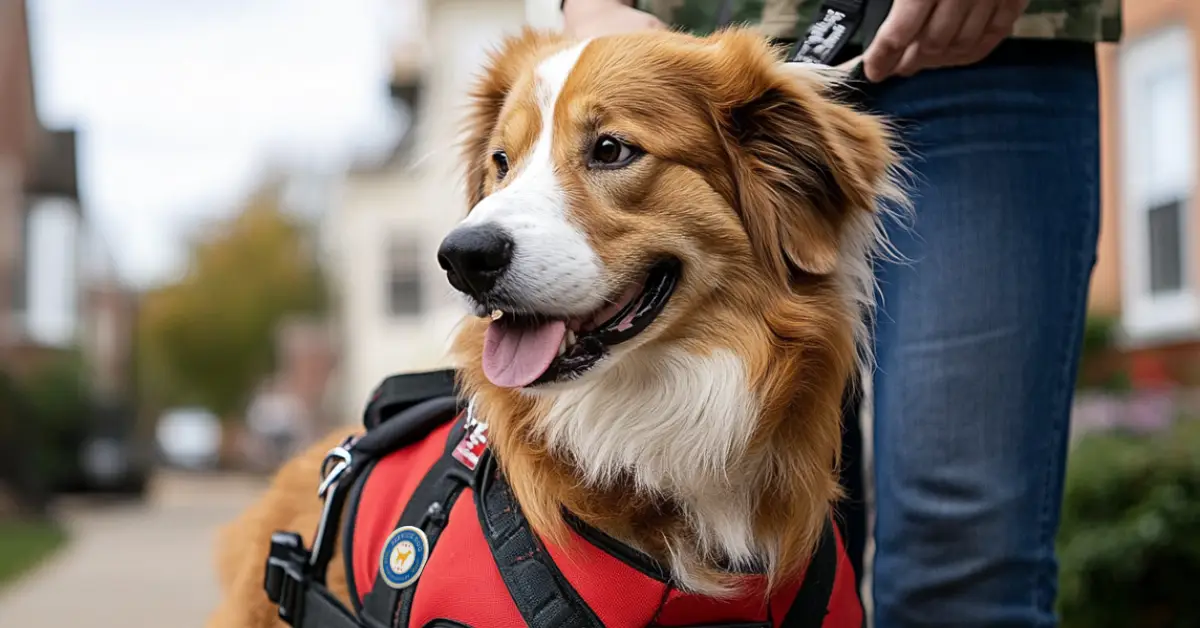
Mobility service dogs go far beyond the common perception of “helping someone walk.” They become extensions of their handlers, performing tasks that might otherwise require human assistance. They retrieve dropped keys when fingers won’t cooperate, open heavy doors when strength fails, clear paths of obstacles that wheelchairs can’t navigate, and provide physical support during transfers or unsteady moments.
The beauty of these service dog partnerships lies in their adaptability. A mobility service dog might help one person stand safely from a seated position, while for another person they might pull a wheelchair up a gentle incline when arms tire. They can be trained to bring specific items on command — medication, phone, water bottle — creating independence where dependency might otherwise exist. Some are taught to press elevator buttons or light switches, while others learn to bark for help if their person falls. The variety of service dog tasks they perform is endless.
Finding the right match isn’t simply about breed, size, or strength, though these factors matter. It’s about discovering a canine partner whose physical capabilities, temperament, and natural aptitudes align with your specific needs and lifestyle.
In this article:
- Large breed mobility service dogs
- Medium-sized mobility support dogs
- Smaller dogs for specialized mobility support
- Finding your perfect mobility partner
Share this image on your site
Large Breed Mobility Service Dogs
Large breeds have traditionally been the go-to choice for mobility support that requires physical strength. If you’re looking for a canine partner who can help with bracing, counterbalance, or momentum pull, these breeds offer unique personalities and capabilities to match different lifestyles and needs.
Labrador Retrievers
When it comes to versatility in the service dog world, Labs are tough to beat. These happy-go-lucky dogs bring a unique blend of strength and sensitivity to mobility work. A good Lab will stay calm during a doctor’s appointment, then happily retrieve your keys when you drop them at home. They’re substantial enough to provide light bracing support — imagine having a living, breathing walking stick that also happens to adore you — while still being manageable in size for car travel or navigating tight spaces.
Mobility tasks Labs excel at:
- Retrieving dropped items with a soft mouth (medication bottles, phones, keys)
- Forward momentum pull for individuals who need help initiating walking
- Light counterbalance support for mild balance issues
- Operating light switches, elevator buttons, and handicap door buttons
- Steadying handlers during transfers from wheelchair to bed/toilet
The Lab’s natural retrieving instinct makes them natural at picking up dropped items, and their people-pleasing nature means they’re usually eager to learn new tasks. That said, they’re not the right choice for everyone. If you’re a taller person or need significant physical support, Labs might not provide enough counterbalance. Their enthusiastic tails can clear coffee tables in seconds, and those who need an immaculate home should know that Labs shed their coat with impressive dedication year-round. They also need regular exercise to prevent boredom — a bored Lab can get creative in ways that won’t amuse you.
Labs work beautifully for handlers with mobility challenges who value versatility and adaptability in their service dog.
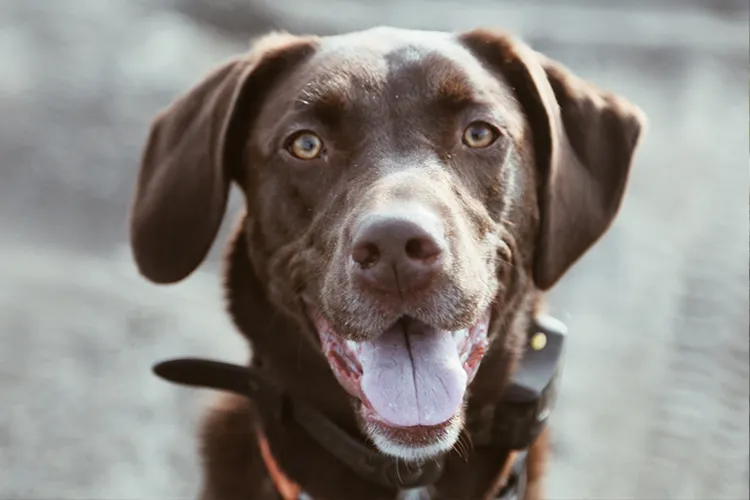
German Shepherds
German Shepherds approach their service work with an intensity and focus that can feel almost like partnering with a colleague. They seem to anticipate needs before you even realize them yourself, making them exceptional for handlers who require a dog with precise body awareness and positioning.
Mobility tasks German Shepherds excel at:
- Complex retrieval tasks requiring problem-solving (finding and bringing specific items)
- Precise counterbalance work for handlers with unsteady gait
- Guiding handlers safely through crowded or complex environments
- Strong forward momentum pull for wheelchair assistance on inclines
- Bracing support for transfers and standing from seated positions
German Shepherds bring a unique combination of strength, intelligence, and trainability to mobility work. They excel at complex tasks like opening doors, operating light switches, or providing rock-solid counterbalance support when navigating uneven terrain. Their natural protective instinct means they’ll often position themselves between their handler and potential hazards without being asked.
However, living with a German Shepherd isn’t always simple. They need clear, consistent training and plenty of mental challenges to prevent boredom. Their double coat means you’ll find yourself on a first-name basis with your vacuum cleaner, especially during seasonal shedding. Health issues like hip dysplasia can affect their service career, making careful breeder selection crucial.
Newfoundlands
There’s something deeply reassuring about partnering with a Newfoundland for mobility work. These gentle giants move through the world with a calm steadiness that instantly puts their handlers and strangers at ease. Despite their imposing size — some males reach 150 pounds — Newfoundlands typically have exceptionally gentle temperaments that make them surprisingly well-suited for public access work.
Mobility tasks Newfoundlands excel at:
- Heavy-duty bracing support for larger or taller handlers
- Counterbalance work for significant balance challenges
- Weight-bearing assistance during standing and transfers
- Pulling wheelchairs through difficult terrain or up inclines
- Creating physical barriers in crowded environments for handlers with stability concerns
The strength of a well-built Newfie is impressive. They can provide substantial bracing support for transfers or unsteady walking, and their sturdy frame means they can help prevent falls for larger handlers. There’s a natural watchfulness to these dogs; they tend to stay attentive to their handlers in a quiet, unobtrusive way.
Living with a Newfoundland does come with significant considerations. Their size alone presents challenges — they occupy considerable space in homes and vehicles. They’re notorious droolers, often leaving soggy evidence of their presence on floors, furniture, and occasionally on unsuspecting visitors’ clothing. Their thick double coat requires serious grooming commitment, and they don’t do well in hot climates. They also have shorter lifespans than some service dog breeds, typically 8-10 years, which means less working time after the considerable investment in training.
Newfoundlands shine for handlers who need substantial physical support and prefer a calm, gentle companion over a more energetic service dog.
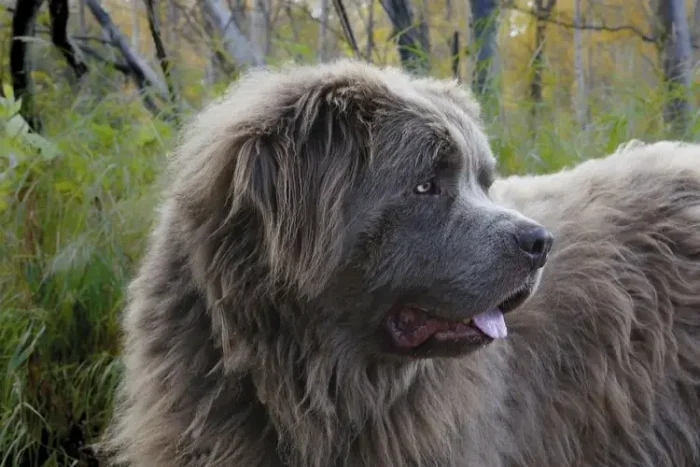
Bernese Mountain Dogs
Bernese Mountain Dogs bring a special combination of strength and sweetness to mobility service work. Walking with a Berner by your side feels like having a living teddy bear that is remarkably strong and devoted to your wellbeing. Their substantial build provides excellent support for handlers who need help with balance or bracing, while their patient, easy-going temperament makes them wonderful partners in public settings.
Mobility tasks Bernese Mountain Dogs excel at:
- Significant bracing support for standing and walking
- Heavy object retrieval that smaller dogs couldn’t manage
- Pulling assistance for wheelchairs on challenging surfaces
- Support during transfers between wheelchair and bed/chair
Having the presence of a Bernese Mountain Dog can feel uniquely comforting. They tend to be quietly attentive without being anxious and typically have a calm confidence that serves them well in service work. Their thick coat provides comfortable gripping points for handlers who need physical support, and they’re generally unfazed by the strange environments and situations service dogs encounter.
There are downsides to choosing a Berner though. Their heartbreakingly short lifespan — often only 7-9 years or shorter — means less working time after extensive training investment. They’re prone to serious health conditions, making careful breeder selection absolutely critical. Their gorgeous thick coat requires regular maintenance and sheds heavily twice a year. Hot weather is their enemy, as they can overheat quickly in warm climates.
Bernese Mountain Dogs work beautifully for handlers seeking a gentle, devoted companion with the strength for significant mobility support, particularly for those who live in cooler climates and can manage their substantial grooming needs.
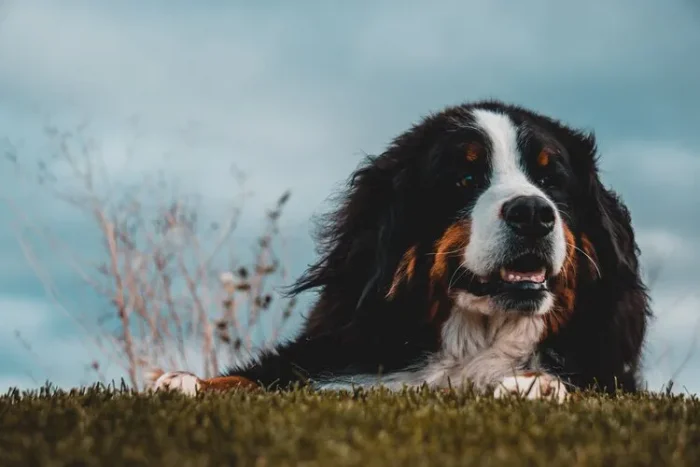
Standard Poodles
Don’t let the fancy haircuts fool you—Standard Poodles bring serious capabilities to mobility service work. These elegant, athletic dogs combine impressive intelligence with surprising strength in a package that works well for handlers with moderate mobility needs. Perhaps their biggest advantage is their hypoallergenic coat, making them one of the few options for handlers who struggle with allergies.
Mobility tasks Standard Poodles excel at:
- Precise item retrieval, even with small or unusual objects
- Light counterbalance work for handlers with mild balance issues
- Opening doors, drawers, and refrigerators with attached pull straps
- Operating adaptive devices and switches
- Alerting to sounds for handlers with dual sensory and mobility needs
Working with a Standard Poodle means partnering with a dog that can problem-solve its way through unexpected situations. They learn tasks remarkably quickly and often show creative approaches to challenges. While not as physically substantial as other giant breeds, a well-built Standard Poodle (particularly males, which can reach 70 pounds) can provide effective counterbalance and light bracing support while being more manageable in size for daily living.
The tradeoff comes in maintenance requirements. That non-shedding coat needs professional grooming every 4–6 weeks, which adds significant cost over the dog’s lifetime. Poodles also need plenty of mental stimulation — they’re thinkers who get bored easily and can become anxious without adequate mental challenges. They tend to be more sensitive than some service dog breeds, sometimes taking correction harder than intended.
Medium-Sized Mobility Support Dogs
While the giants of the dog world often get the spotlight for mobility work, medium-sized breeds offer their own unique advantages.
Boxer
Partnering with a Boxer for mobility work can indeed feel special. These dogs bring an endearing combination of strength, agility, and heart to their service. Despite their medium size, Boxers pack impressive muscle into their frame, making them stronger than you might expect for balance support and momentum pull tasks.
Specific mobility tasks Boxers excel at:
- Providing stability and balance assistance for ambulatory handlers
- Retrieving items with enthusiasm and speed
- Pulling manual wheelchairs short distances when the handler fatigues
- Operating handicap door buttons and light switches
- Helping remove clothing items like socks, shoes, and jackets
Working with a Boxer means having a deeply loyal companion who tends to develop an almost uncanny awareness of their handler’s needs. Their expressive faces seem to telegraph genuine concern when their person is struggling, and they typically respond with eager assistance. Their short coat is a dream for those who dread grooming sessions, requiring minimal maintenance beyond regular quick brushing.
The Boxer personality is where things get interesting. These dogs approach life with enthusiasm that borders on exuberance — they’re the eternal optimists of the dog world. This energy requires proper channeling through exercise and training, or you might find yourself with a four-legged tornado in your living room. Their stubborn streak can make training more challenging, requiring consistency and patience. While they can provide excellent balance support and item retrieval, they simply aren’t large enough for substantial bracing needs.
Boxers make excellent partners for active handlers who need moderate mobility assistance and appreciate a dog with personality plus. Just be prepared for occasional drool and plan for daily exercise.
Golden Retrievers
If dogs could be ambassadors, Golden Retrievers would lead the diplomatic corps. These sunshine-natured dogs bring a special blend of intelligence, trainability, and genuine goodness to mobility service work. There’s something almost therapeutic about their presence — many handlers find their Golden’s unwavering optimism lifts their spirits even on difficult days.
Mobility tasks Golden Retrievers excel at:
- Exceptionally gentle retrieval of fragile items (medication bottles, phones, glasses)
- Light bracing support for standing from a seated position
- Helping with dressing and undressing tasks
- Pulling lightweight wheelchairs on smooth surfaces
- Steadying handlers while navigating obstacles or uneven terrain
The Golden excels at precise, gentle retrieving work (it’s in their name, after all). They can be taught to carefully pick up anything from a dropped credit card to a fragile medication bottle. Their moderate size and strength make them suitable for light bracing and balance support, though not for handlers requiring substantial physical assistance. Many Goldens seem to intuitively understand their person’s emotional state, providing comfort during painful flares or difficult days.
Living with a Golden does mean embracing a certain amount of hair in your life — their beautiful coats shed consistently and spectacularly during seasonal changes. They need regular exercise to maintain their mental and physical health, though they’re typically not as demanding as other working breeds. Health issues, particularly certain cancers, can affect their service career length, making careful breeder selection important.
The Golden’s social butterfly nature can be either a benefit or a challenge, depending on your perspective. They genuinely love meeting people, which can create natural opportunities for social connection — but may require extra training to maintain focus when working in public.
Golden Retrievers shine for handlers seeking a dog with exceptional retrieval skills, moderate physical support capabilities, and a naturally uplifting presence.
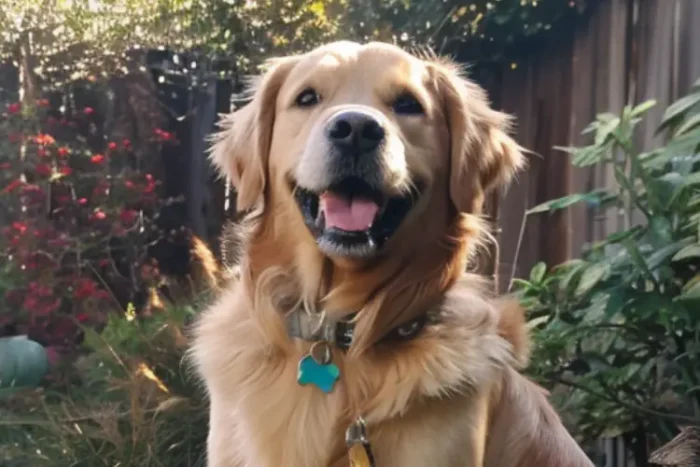
Collie
There’s a thoughtfulness to Collies that makes them unique among service dogs. Whether the classic Rough Collie with its flowing coat or the sleeker Smooth Collie, these dogs bring an almost intuitive sensitivity to mobility work. They often seem to anticipate what their handlers need before being asked, positioning themselves precisely for support or retrieving items with careful attention.
Mobility tasks Collies excel at:
- Guiding handlers through complex environments (finding exits, navigating crowds)
- Alerting to approaching people or obstacles in the handler’s path
- Retrieving specific items by name with remarkable accuracy
- Providing light counterbalance for minor balance issues
- Offering anxiety-reducing pressure during medical appointments
Collies typically offer a calmer energy level than many working breeds, making them well-suited to handlers who don’t want a highly energetic dog. Their moderate size — usually 50-75 pounds — provides enough substance for light balance work while remaining manageable in homes and vehicles. Their natural herding instincts translate beautifully to guiding work; they excel at tasks like finding exits in buildings or helping their handlers navigate through crowds.
The Collie’s intelligence comes with a sensitive nature. These dogs typically respond best to gentle, positive training methods and can become anxious with harsh corrections. The gorgeous coat of the Rough Collie requires significant grooming commitment, though Smooth Collies offer a lower-maintenance alternative. Some Collies have strong herding tendencies that may need channeling to prevent them from trying to “herd” children or other pets.
Perhaps most impressively, Collies often show remarkable problem-solving abilities when their handlers face unexpected obstacles. They seem to understand the goal rather than just the task, allowing them to adapt their assistance appropriately.
Smaller Dogs for Specialized Mobility Support
When we think of mobility service dogs, we often picture large, sturdy breeds. But for many people with disabilities, smaller dogs can provide life-changing assistance with tasks that don’t require physical strength. These compact canine partners excel at different aspects of mobility support while fitting into spaces and lifestyles where larger dogs might struggle.
Border Collie
If there were a canine equivalent to a PhD, Border Collies would have one in problem-solving. These remarkable dogs bring a level of intelligence and focus to service work that can be almost uncanny. At 30–45 pounds, they occupy that sweet spot between small and medium-sized, making them manageable in tighter living spaces while still having enough substance to perform meaningful tasks.
Mobility tasks Border Collies excel at:
- Performing complex sequences of behaviors (retrieving multiple items in order)
- Operating adaptive equipment and technology with precision
- Navigating complex environments to find help when needed
- Retrieving items from difficult-to-reach places
- Alerting to changes in their handler’s condition alongside mobility support
What makes Border Collies particularly valuable for certain handlers is their extraordinary ability to learn complex sequences of behaviors. Need a dog who can retrieve your phone, bring it to you, and then fetch your medication from another room? A well-trained Border Collie can master these intricate tasks with remarkable precision. They excel at operating adaptive equipment — from pulling open doors with attached ropes to pressing elevator buttons — and can retrieve items with surgical accuracy.
Living with a Border Collie means committing to meeting their considerable mental and physical needs. These dogs have an almost desperate need for both physical exercise and mental challenges; without proper outlets, they can develop anxious or obsessive behaviors. Their herding heritage means some will try to “organize” moving objects in their environment (including children and other pets) if not given appropriate direction.
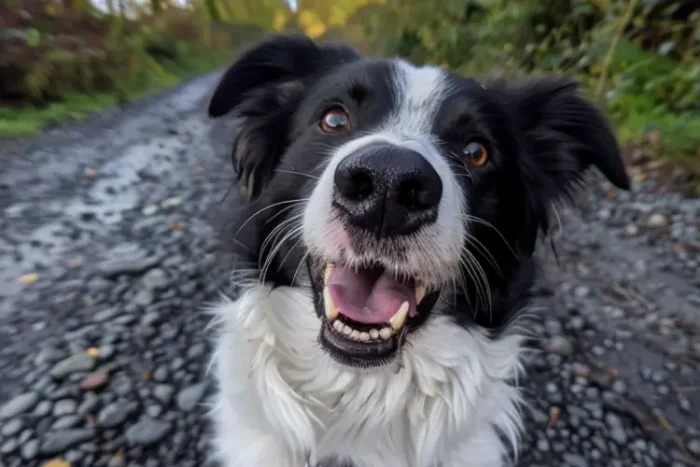
Corgi
Don’t let their short legs fool you — Corgis approach life and work with a confidence that would put many larger dogs to shame. These compact powerhouses bring surprising strength, intelligence, and a take-charge attitude to service tasks that don’t require physical bracing.
Mobility tasks Corgis excel at:
- Retrieving dropped items for handlers with limited bending ability
- Activating floor-level emergency call buttons
- Opening lower cabinets and drawers with pull straps
- Medical alerting combined with item retrieval
What makes Corgis unique is how much capability they pack into their small frame. Their sturdy build and natural problem-solving abilities make them excellent at tasks like retrieving dropped items, opening cabinet doors, or operating adaptive devices. Many handlers are surprised by how effectively these short-statured dogs can pull lightweight mobility equipment when properly harnessed. Their alert barking — a heritage from their days as farm dogs — can be channeled into excellent medical alert work.
Living with a Corgi means embracing their distinctive personality. They tend to have opinions about everything, and aren’t shy about expressing them. Their independent streak can make training more challenging, requiring consistency and a sense of humor. Despite their small size, they shed impressively, coating your home in a near-constant dusting of fur. Their unique body structure makes them prone to back problems, so careful attention to weight management and appropriate equipment is essential.
Corgis excel for handlers who need help with retrieval, alerts, and operating devices, particularly those with a sense of humor who appreciate a dog with personality. Their smaller size makes them ideal for apartment living or frequent travel.
Jack Russell Terrier
There’s something magical about the amount of dog packed into a Jack Russell’s small frame. These compact, muscular terriers bring an intensity and work ethic to service tasks that can be perfect for handlers who need specific types of mobility assistance.
Mobility tasks Jack Russell Terriers excel at:
- Precise retrieval of small items from tight spaces
- Alerting to sounds for handlers with dual sensory-mobility impairments
- Operating accessible switches and buttons
- Fetching emergency medications quickly
- Providing medical response support alongside mobility assistance
Jack Russells excel at precise, targeted tasks. Do you need a dog who can retrieve your keys from where you dropped them, even if they’ve slid under furniture? A Jack Russell will approach that mission with laser focus. Their impressive strength-to-size ratio makes them surprisingly capable of pulling lightweight items or activating pressure plates. Many handlers find their natural alertness makes them excellent for medical alert work as well.
The Jack Russell personality is where things get interesting. These dogs approach life like they’ve had three espressos and have a list of important tasks to complete immediately. This energy can be perfectly channeled into multiple service tasks throughout the day, but requires consistent boundaries and direction. They have a strong prey drive that needs careful management to prevent distraction when working. Their intelligence is matched with an independent streak that can sometimes translate to stubborn behavior.
Jack Russells make excellent service partners for handlers who need assistance primarily with retrieval and alert tasks, particularly those who appreciate their compact size for travel or smaller living spaces. Their long lifespan — often 13–16 years — means a longer working career after the investment in training. They’re best matched with handlers who can provide clear leadership and enjoy their spirited approach to life.

Finding Your Perfect Mobility Partner
Choosing the right mobility service dog isn’t just about picking a breed — it’s about finding a partner whose capabilities align with your needs and whose personality fits your life.
Start by getting brutally honest about what you need help with. Make a list of tasks that would genuinely improve your independence, then prioritize them. Do you primarily need help retrieving dropped items? Or is physical support for balance your main concern? Your specific needs will point you toward certain sizes and breeds of dogs.
Your living situation matters enormously in this decision. That Saint Bernard might provide perfect bracing support, but if you live in a third-floor walkup or a tiny apartment, you’re setting yourself up for challenges. Consider not just your home, but how you’ll transport your dog and where you typically go throughout your day.
Physical matching is key for tasks requiring strength. If you need substantial bracing support, experts recommend dogs standing at least 23 inches at the shoulder and weighing 55+ pounds. The dog’s structure should be appropriate for the work you’re asking them to do — a dog with perfect temperament but poor physical structure isn’t kindness to either of you.
Health testing might sound boring, but it’s absolutely critical. A mobility service dog represents thousands of hours of training investment — you want that dog working for as many years as possible. Dogs from health-tested parents with excellent hip and elbow scores have a much better chance of a long working life.
Be honest about your training capacity. Some breeds need more consistent leadership than others. If your health fluctuates significantly or you have limited experience with dog training, choosing a more biddable breed and building a relationship with a professional trainer becomes even more important.
About the Author: The writing team at Service Dog Certifications is made up of folks who really know their stuff when it comes to disability laws and assistance animals. Many of our writers and editors have service dogs themselves and share insights from their own experiences. All of us have a passion for disability rights and animals.
2 comments
Leave a Reply Cancel reply
Latest Posts
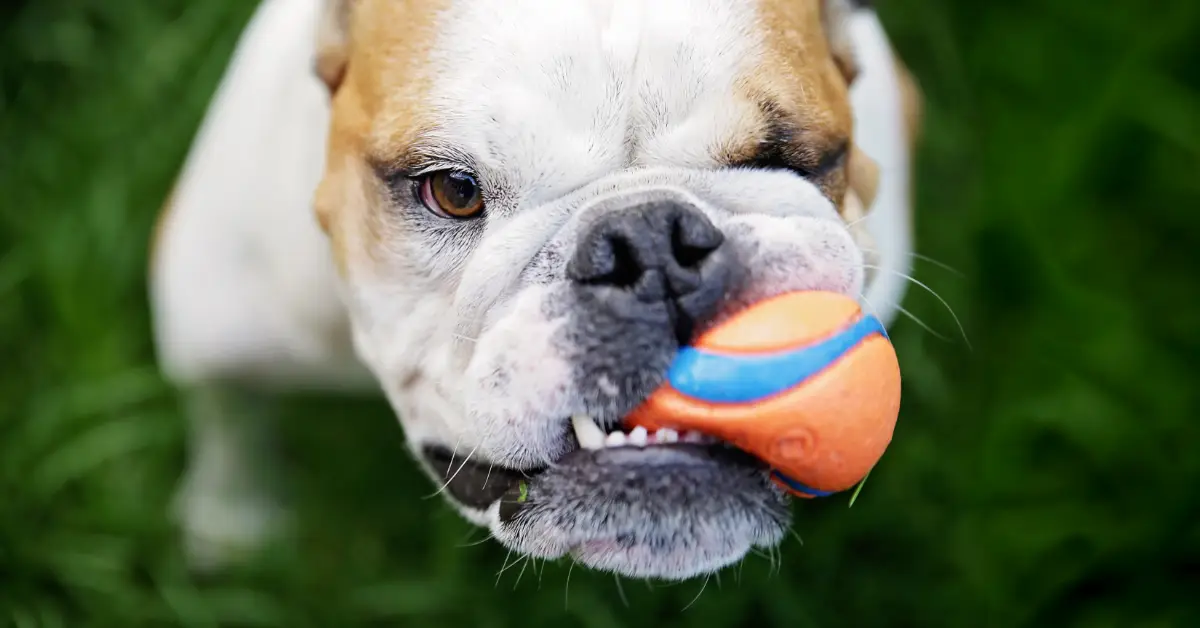
Dangerous Materials Hiding in Your Dog Products
Jake’s German Shepherd began developing strange rashes around his collar. Three vet visits later, they figured out the leather was treated with chromium — a chemical that irritates sensitive skin. Jake had no idea his dog’s collar contained industrial chemicals. Most dog owners don’t know what goes into the products they buy. Many companies use […]

Read More
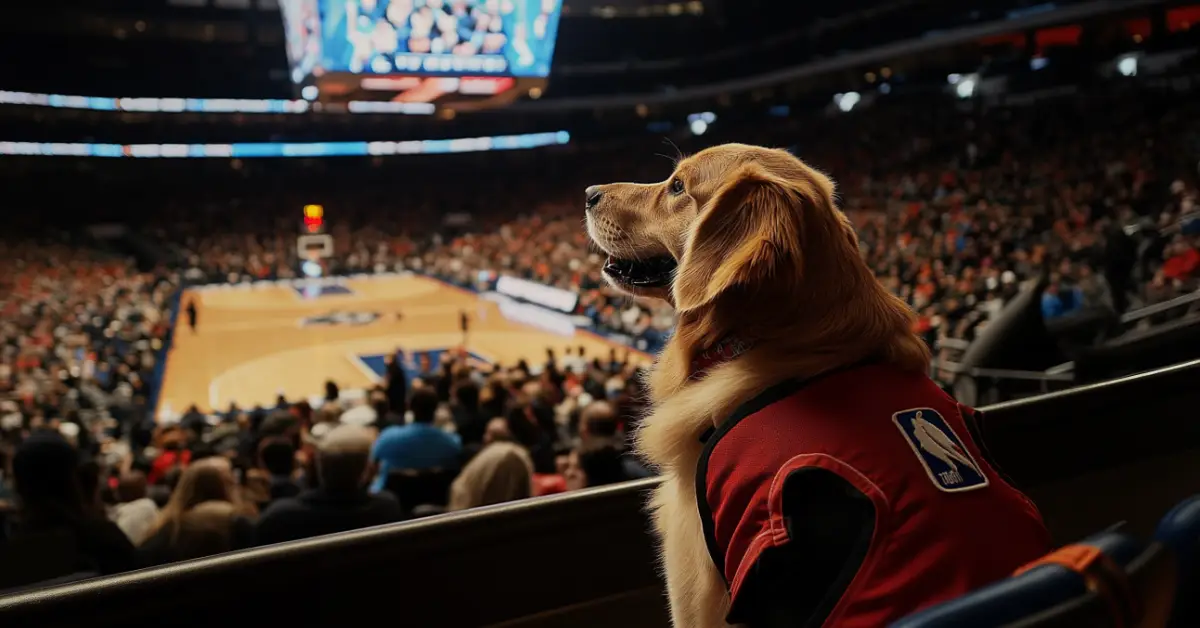
Can You Bring a Service Dog to a Basketball Game?
Yes, you absolutely can bring your service dog to basketball games. Whether you’re heading to your local high school tournament, a packed college rivalry game, or splurging on NBA tickets, the Americans with Disabilities Act protects your right to be accompanied by your service dog anywhere the public can go. When you arrive, venue employees […]

Read More

Best Pet Health Insurance Providers
If you own a pet, you know how important — and expensive — vet care can be. One way to offset those costs is to purchase pet health insurance. Like typical health insurance, pet insurance is available at many price points, and can cover all, most, or only some of your vet-related costs. It can […]

Read More
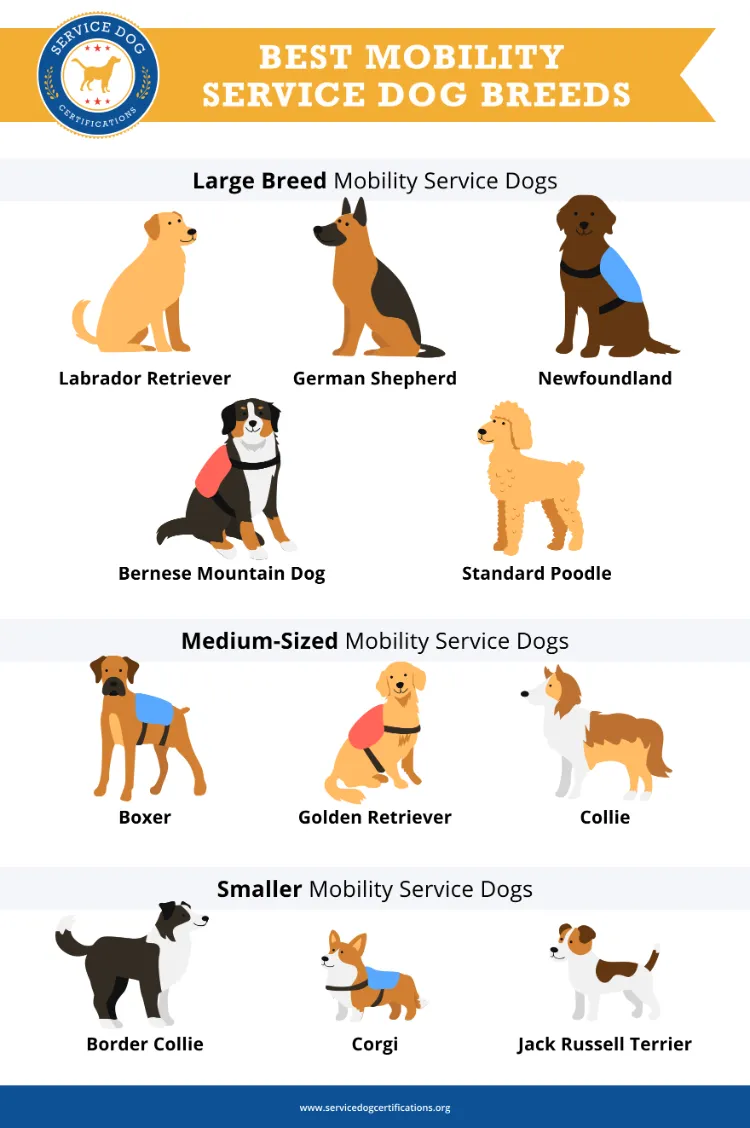
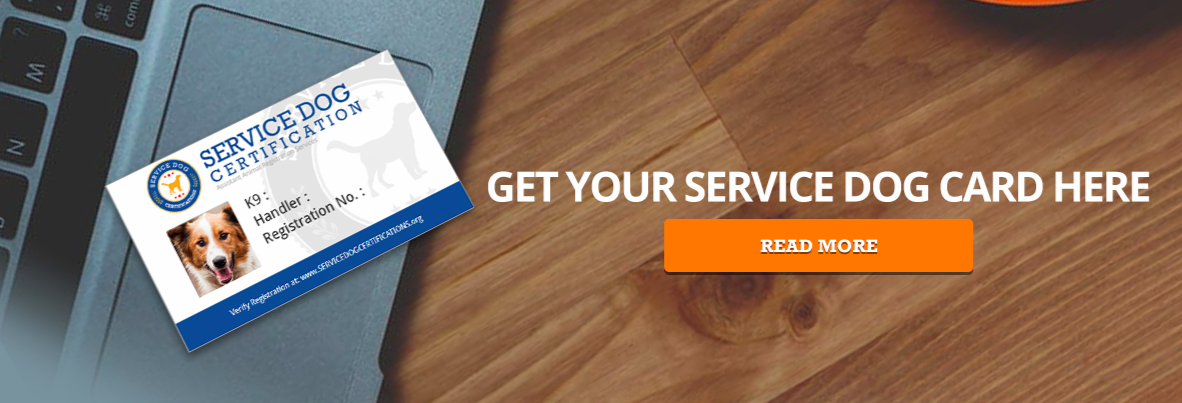
Is the “Bordoodle” a good stability/mobility service dog? I have heard that they do. I am a 70 year old 5” 10’ male who suffers from chronic vertigo.
We recommend speaking to your healthcare professional and possibly a professional trainer to see what characteristics would best suit the job you need accomplished. A Bordoodle can certainly have the temperament and intelligence to be trained, but suitability as a service dog depends on many other factors as well – such as size and strength, depending on what the task at hand is.